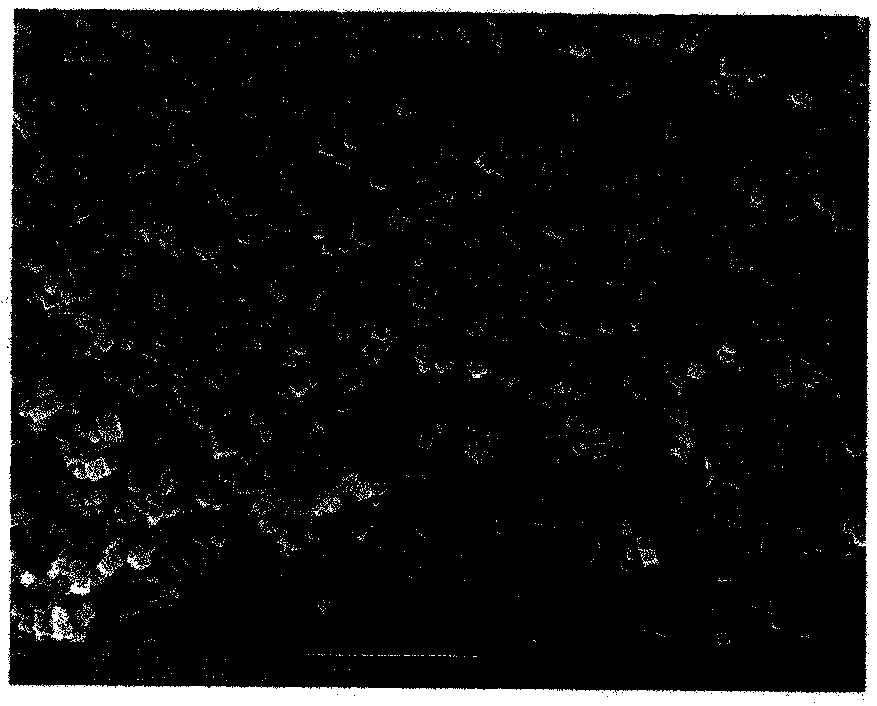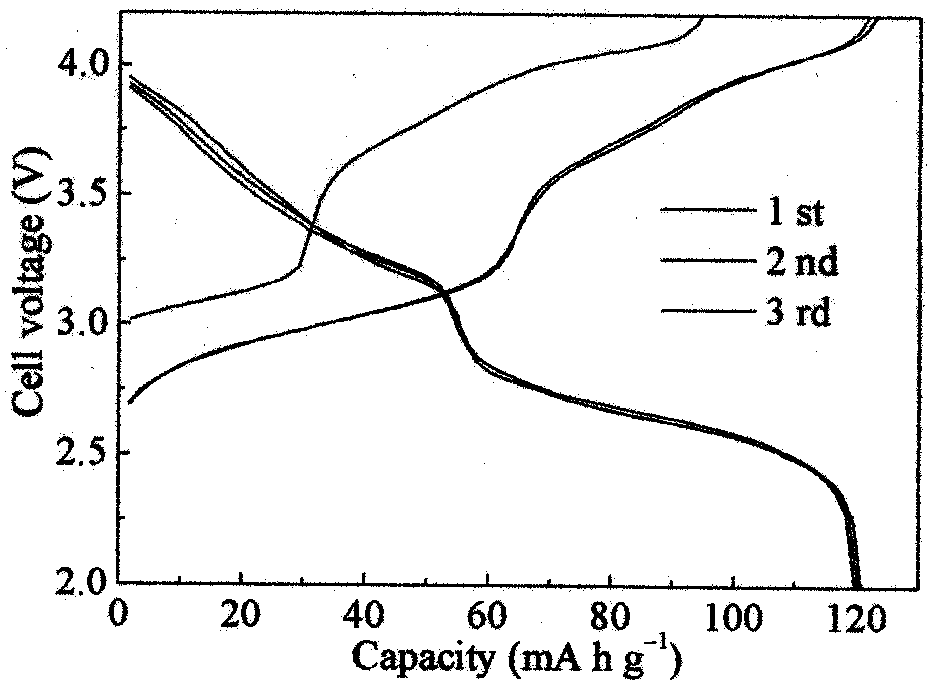Method for synthesizing high-sodium iron-based Prussian blue electrode material
A synthesis method and electrode material technology, applied to battery electrodes, circuits, electrical components, etc., can solve problems such as large-scale energy storage, high cost of lithium-ion batteries, and limited reserves of lithium raw materials, and achieve a simple and reasonable synthesis method. Ease of industrial production and regular appearance
- Summary
- Abstract
- Description
- Claims
- Application Information
AI Technical Summary
Problems solved by technology
Method used
Image
Examples
Embodiment 1
[0028] Embodiment 1: Taking 100g of the finished product of the electrode material as the meter, the molar percentages of the required raw materials are as follows: 60g of ferrous chloride is selected as the metal salt containing iron ions, and the molar percentage is 26%, and the metal salt containing ferricyanide ions is sodium ferrocyanide 145g, the molar percentage is 26%, the complexing agent selects sodium citrate 160g, and the molar percentage is 48%.
[0029] The synthesis method is as follows:
[0030] Step 1. According to the ratio of raw materials, take iron ion-containing metal salt and complexing agent into a container, add 10L solvent and mix evenly to become solution A for use;
[0031] Step 2, according to the ratio of raw materials, take metal salt containing ferricyanide ion and put it into a container, add 10L solvent and mix evenly to prepare solution B for later use;
[0032] Step 3, put solution A and solution B into a container, and mix and react for 2 ...
Embodiment 2
[0041] Embodiment 2: Taking 200g of the finished product of the electrode material as the meter, the molar percentages of the required raw materials are as follows: 120 g of ferrous chloride is selected as the metal salt containing iron ions, and the molar percentage is 25%, and the metal salt containing ferricyanide ions is sodium ferrocyanide 290g, the molar percentage is 25%, and the complexing agent is 252g of citric acid, and the molar percentage is 50%.
[0042] The synthesis method is as follows:
[0043] Step 1. According to the ratio of raw materials, take iron ion-containing metal salt and complexing agent into a container, add 10L solvent and mix evenly to become solution A for use;
[0044] Step 2, according to the ratio of raw materials, take metal salt containing ferricyanide ion and put it into a container, add 10L solvent and mix evenly to prepare solution B for later use;
[0045] Step 3, put solution A and solution B into a container, and mix and react for 4...
Embodiment 3
[0054] Embodiment 3: Taking 500g of the finished product of the electrode material as the meter, the molar percentages of the required raw materials are as follows: 300g of ferrous chloride is selected as the metal salt containing iron ions, and the molar percentage is 30%, and the metal salt containing ferricyanide ions is sodium ferrocyanide 725g, the molar percentage is 30%, and the complexing agent is 396g of sodium alginate, and the molar percentage is 40%.
[0055] The synthesis method is as follows:
[0056] Step 1. According to the ratio of raw materials, take iron ion-containing metal salt and complexing agent into a container, add 10L solvent and mix evenly to become solution A for use;
[0057] Step 2, according to the ratio of raw materials, take metal salt containing ferricyanide ion and put it into a container, add 10L solvent and mix evenly to prepare solution B for later use;
[0058] Step 3, put solution A and solution B into the container, and mix and react ...
PUM
 Login to View More
Login to View More Abstract
Description
Claims
Application Information
 Login to View More
Login to View More - R&D
- Intellectual Property
- Life Sciences
- Materials
- Tech Scout
- Unparalleled Data Quality
- Higher Quality Content
- 60% Fewer Hallucinations
Browse by: Latest US Patents, China's latest patents, Technical Efficacy Thesaurus, Application Domain, Technology Topic, Popular Technical Reports.
© 2025 PatSnap. All rights reserved.Legal|Privacy policy|Modern Slavery Act Transparency Statement|Sitemap|About US| Contact US: help@patsnap.com



